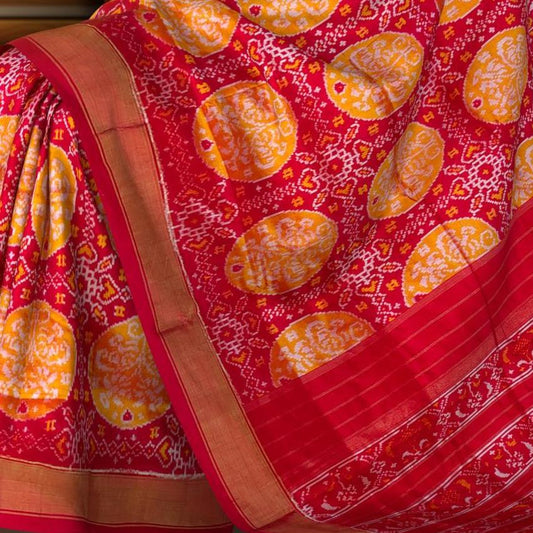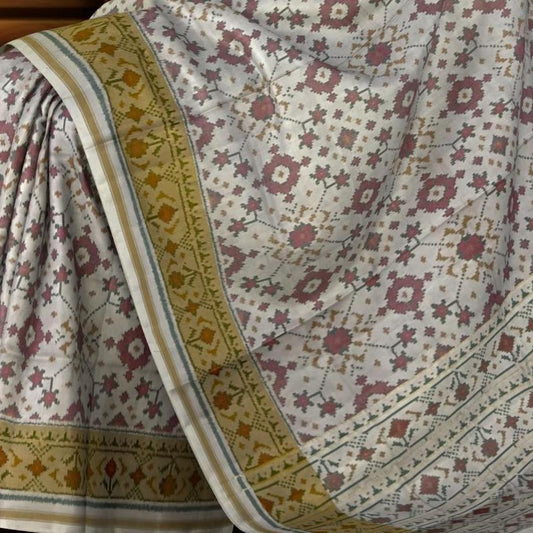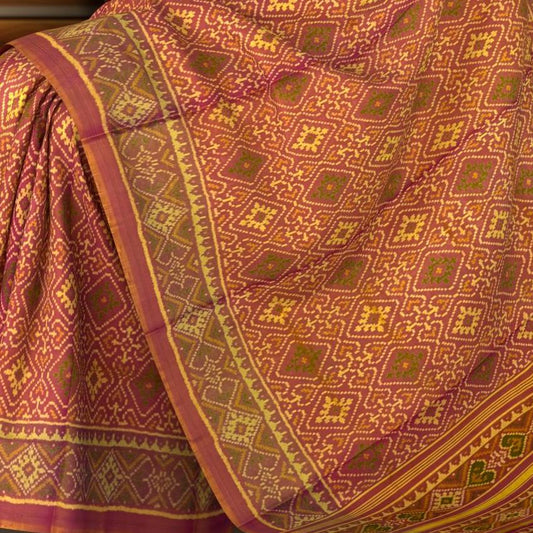Empowering Artisans: A Comprehensive Guide to Government Schemes and Support for Kanchipuram Silk Weavers
Nestled in the rich cultural heritage of Tamil Nadu, the illustrious town of Kanchipuram stands as a testament to the legacy of silk weaving. Home to the skilled Kanchipuram silk weavers, the town's vibrant silk sarees are renowned worldwide for their intricate designs and superior quality. However, the weavers often face challenges in sustaining their traditional craft amidst the evolving market dynamics.
In recognition of their invaluable contribution to the Indian textile industry, the Government of India has implemented various schemes and initiatives to support and uplift the Kanchipuram silk weavers. In this comprehensive guide, we delve into the plethora of schemes and support available, empowering these artisans and ensuring the continuity of their craft for generations to come.
Government Schemes and Support for Kanchipuram Silk Weavers
1- Weaver Mudra Scheme (WMS)
Launched with the objective of providing financial assistance to weavers for the procurement of raw materials and equipment, the Weaver Mudra Scheme has emerged as a crucial lifeline for Kanchipuram silk weavers. Under this scheme, weavers can avail of collateral-free loans at subsidized interest rates, thereby enabling them to expand their production and meet market demands effectively.
The direct access to financial aid has not only alleviated the weavers' economic constraints but has also fostered a sense of entrepreneurial spirit within the community. By empowering the weavers to invest in advanced looms and superior raw materials, the WMS has catalyzed an upsurge in production efficiency and product quality, further solidifying the position of Kanchipuram silk in the global market.
2- Silk Samagra
Raw Material Assistance
The Silk Samagra scheme facilitates the procurement of high-quality silk yarn at subsidized rates, thereby reducing the production cost for weavers and ensuring the maintenance of product quality. The provision of quality raw materials has significantly contributed to the refinement of Kanchipuram silk sarees, accentuating their allure and durability in the competitive market.
Skill Development Programs
With a focus on enhancing the weavers' skill set, the Silk Samagra scheme provides comprehensive training programs, equipping them with contemporary weaving techniques and design trends, thereby fostering their competitiveness in the global market. By amalgamating traditional craftsmanship with modern intricacies, the scheme has elevated the aesthetic appeal of Kanchipuram silk, captivating the discerning tastes of domestic and international consumers alike.
3- Handloom Weavers Comprehensive Welfare Scheme (HWCWS)
Designed to cater to the holistic well-being of handloom weavers across the country, the HWCWS encompasses various welfare measures, including health insurance, housing facilities, and educational support for the weavers' children. Through its inclusive approach, this scheme has significantly improved the socio-economic conditions of Kanchipuram silk weavers, fostering a sense of security and stability within the community.
The provision of health insurance has relieved the weavers of the burdensome healthcare expenses, ensuring their physical well-being and enabling them to focus wholeheartedly on their craft. Additionally, the availability of housing facilities has provided a stable living environment, fostering a conducive atmosphere for uninterrupted weaving, thereby preserving the authenticity and finesse of Kanchipuram silk.
4- Export Promotion Measures
Recognizing the global demand for Kanchipuram silk sarees, the government has actively facilitated export promotion measures, including participation in international trade fairs and exhibitions. By providing exposure to international markets and fostering collaborations with foreign buyers, these initiatives have bolstered the global presence of Kanchipuram silk, thereby amplifying the weavers' market reach and financial prospects.
The strategic participation in international trade fairs has not only broadened the weavers' global network but has also facilitated the exploration of diverse design inspirations, further enriching the repertoire of Kanchipuram silk sarees. The collaborative ventures with international buyers have not only stimulated foreign investments but have also fostered cultural exchanges, perpetuating the grandeur of Kanchipuram silk on the global stage.
5- Technology Upgradation Schemes
Understanding the significance of technological advancement in enhancing the productivity and quality of silk weaving, the government has introduced various technology upgradation schemes. These schemes provide financial assistance to weavers for the adoption of modern weaving machinery, thereby streamlining the production process and ensuring the creation of high-quality Kanchipuram silk products that align with contemporary market demands.
The integration of modern technology has not only optimized the weaving process but has also enhanced the precision and finesse of Kanchipuram silk sarees, positioning them as a symbol of luxury and craftsmanship in the global textile market. The technological upgradation schemes have empowered weavers with the tools necessary to embrace innovation while preserving the essence of their traditional artistry, paving the way for sustainable growth and competitiveness in the silk industry.
6- Market Linkage Initiatives
To facilitate direct access to domestic and international markets, the government has launched market linkage initiatives, creating platforms for weavers to showcase and sell their Kanchipuram silk products. By organizing specialized exhibitions and trade events, these initiatives bridge the gap between weavers and consumers, fostering direct interactions and feedback, and enabling weavers to cater to evolving consumer preferences and trends in the textile industry.
The market linkage initiatives have not only provided weavers with a broader customer base but have also nurtured a deeper understanding of consumer demands, enabling them to adapt their designs and production processes accordingly. The direct engagement with consumers has not only enhanced market visibility but has also cultivated a sense of appreciation and recognition for the intricate artistry and cultural heritage embodied in Kanchipuram silk.
Conclusion
In the wake of an ever-evolving textile landscape, the sustenance of traditional craftsmanship stands as an imperative priority. Through an array of meticulously crafted schemes and support initiatives, the Government of India has demonstrated its unwavering commitment to preserving the rich cultural heritage of Kanchipuram silk weaving.
By empowering the weavers with financial aid, skill enhancement opportunities, technological advancements, and strategic market linkages, these endeavors have not only revitalized the silk industry but also upheld the dignity and resilience of the artisans, ensuring a flourishing future for Kanchipuram silk weaving, one stitch at a time.







Leave a comment
Please note, comments need to be approved before they are published.